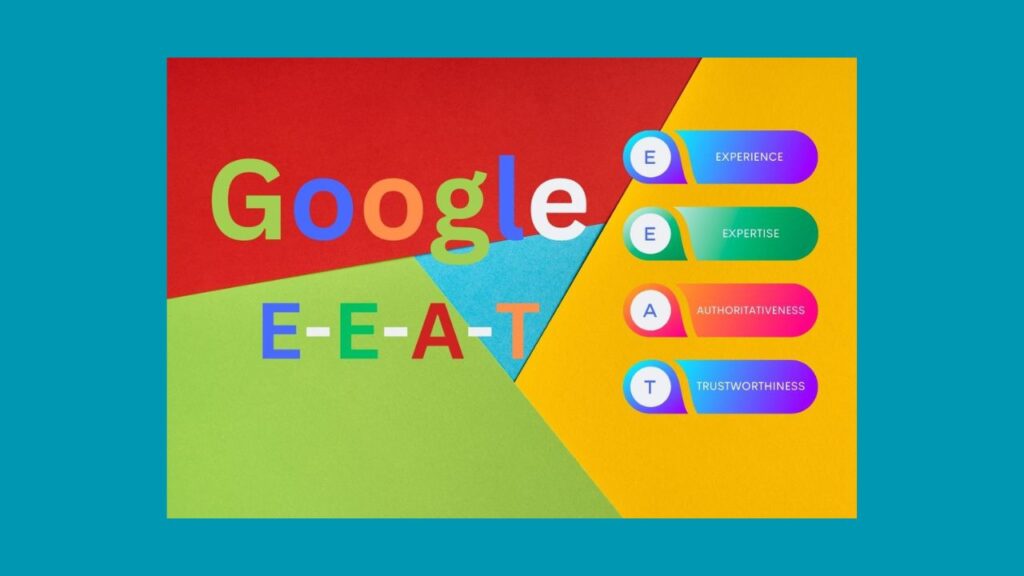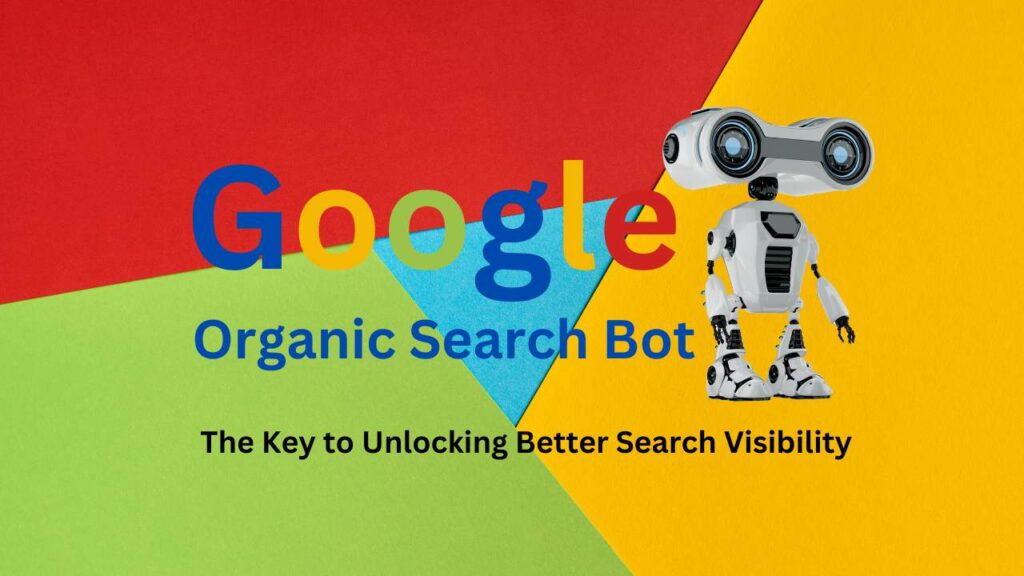In the vast world of the internet, finding information is as simple as typing a query into Google or any other search engine. But have you ever wondered how these search engines decide which results to show you? This is where Search Engine Results Pages (SERPs) come into play. This guide will walk you through What Is a SERP? A Comprehensive Guide to Search Engine Results Pages, breaking down the concept in an easy-to-understand manner.
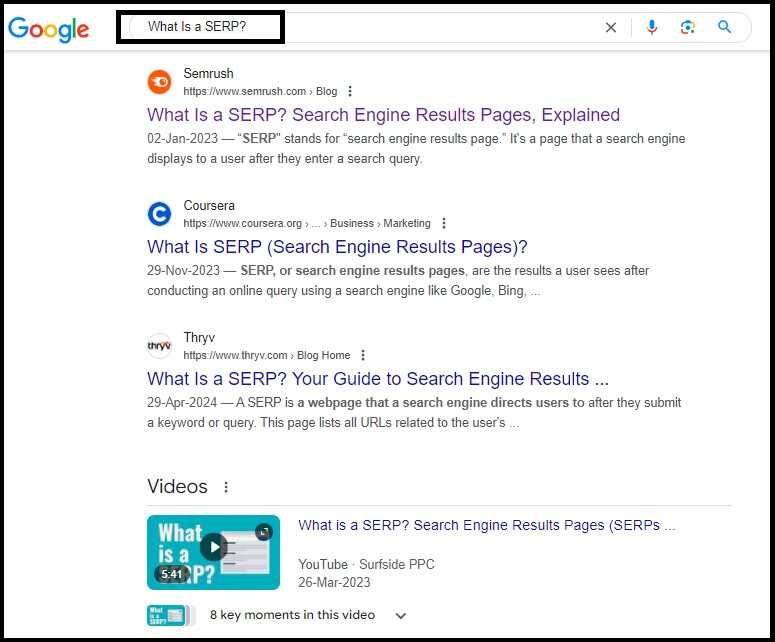
What Is a SERP?
To put it simply, a Search Engine Results Page (SERP) is the page you see after you type a query into a search engine like Google or Bing. The SERP shows the most relevant links to your search query, whether you’re looking for a how-to article, a product, or a fun fact.
Think of a SERP as the results screen in a game show — you’re the contestant and the search engine is the host, presenting you with the best possible answers to your question.
However, a SERP isn’t just a list of links. It can also include ads, images, videos, and even social media updates. Depending on the query, the SERP may display organic results, which are unpaid listings, or paid results, such as advertisements.
In this article you will learn about “What Is a SERP? A Comprehensive Guide” and learn how SERPs influence SEO, visibility, and online success.
How Do SERPs Work?
Search engines like Google or Bing use complex algorithms to deliver the most relevant results for your query. These algorithms consider various factors like:
- Keywords: What terms did you use in your query?
- Location: Where are you searching from?
- User history: Have you visited similar pages before?
- Search intent: Are you looking for information, navigating to a website, or buying something?
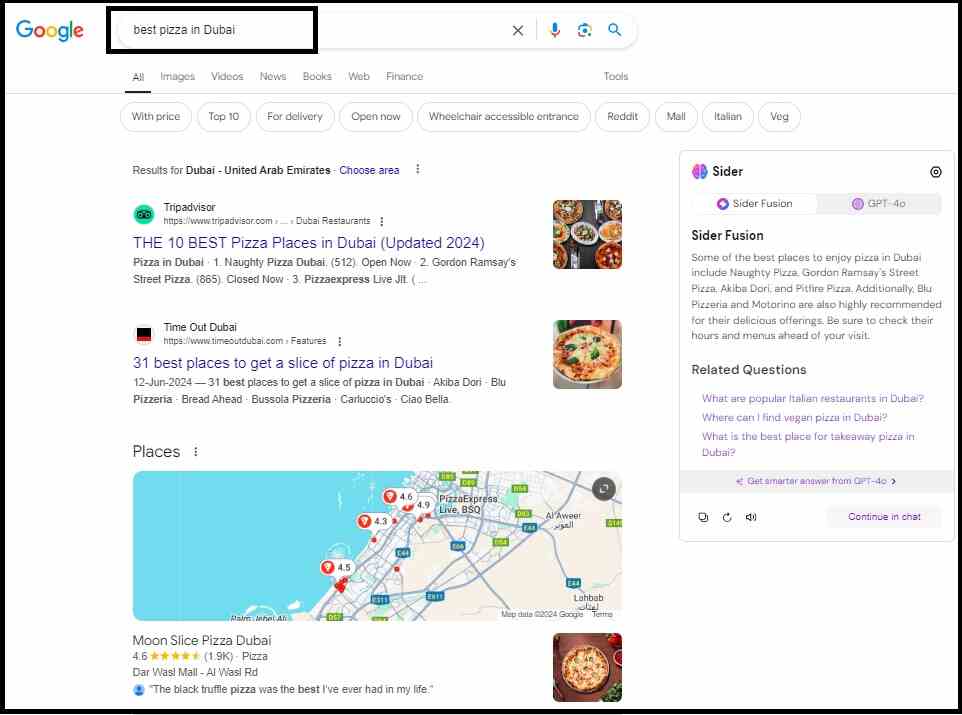
Let’s imagine you’re searching for the best pizza in town. The SERP will not only show you a list of pizza places nearby but might also include reviews, a map showing local pizza joints, and even a menu from your favorite pizzeria. With this example it will be more clear “What Is a SERP? A Comprehensive Guide” and learn how SERPs influence SEO, visibility, and online success.
Types of Search Queries
Not all searches are the same. Depending on your intent, you might be making one of the following types of queries:
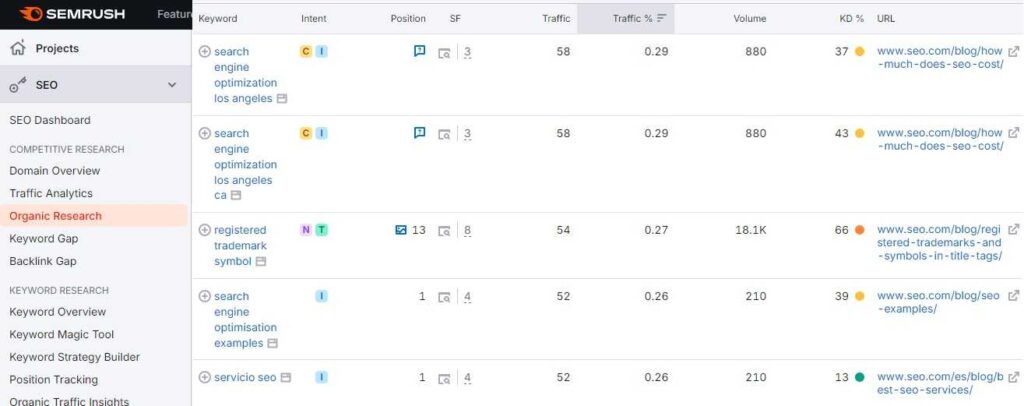
- Navigational Queries: When you’re trying to find a specific website. For example, typing “Facebook login” instead of directly entering facebook.com.
- Informational Queries: When you’re looking for information, like “How to make pizza dough at home.”
- Transactional Queries: When you’re ready to make a purchase, such as “buy pizza oven online.” These queries usually result in both organic and paid results appearing on the SERP.
- Commercial Queries: Commercial intent keywords are those typed into search engines by consumers looking to buy or educate themselves in order to buy
In fact, transactional queries are where paid results, such as Google Ads, become most relevant. Advertisers bid for these keywords, and the search engine displays their ads at the top of the page. So, “What Is a SERP? A Comprehensive Guide” and learn how SERPs influence SEO, visibility, and online success.
What Is SERP vs SEO?
This brings us to a key question: What is the difference between SERP and SEO?
While a SERP is the actual page that displays the search results, Search Engine Optimization (SEO) is the process of optimizing a website or page to improve its chances of ranking higher in organic search results. Think of SEO as a strategy to ensure your content makes it to the top of the SERP, without paying for ads.
“What Is a SERP? A Comprehensive Guide” and learn how SERPs influence SEO, visibility, and online success.
Why Are SERPs Important for Digital Marketers?
If you’re a digital marketer or a business owner, understanding “What Is a SERP? A Comprehensive Guide to Search Engine Results Pages” is crucial. Here’s why:
Organic Search Visibility
The higher your website ranks in organic search results, the more traffic you’re likely to get. For instance, studies show that more than 90% of consumer traffic goes to websites on the first page of search results. If your website isn’t on the first page, you’re missing out on a huge chunk of potential visitors.
Paid Search Ads
Paid results, like those from Google Ads, offer another opportunity to appear on the first page of the SERP. If you’re running an online store, for example, investing in paid ads can get your products in front of more potential buyers.
Common Features of a SERP
A modern SERP is visually rich and packed with information include:
1. Knowledge Graph
The Knowledge Graph is a feature that provides concise information on the right-hand side of the page. For example, searching “Abraham Lincoln” might show you a summary of his life, important dates, and related figures. This feature is particularly useful for informational searches.
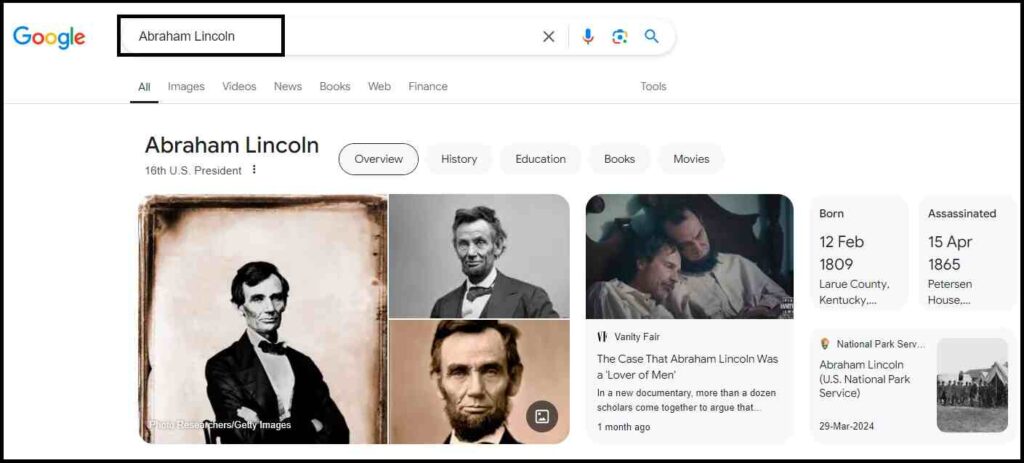
2. Featured Snippets
A featured snippet is a box at the top of the SERP that shows a brief answer to a question. If you search, “What is a SERP?”. Getting your content into a featured snippet can dramatically increase your visibility.
3. Local Pack
The Local Pack shows a map with businesses relevant to your search, especially when looking for services near you. For example, if you type, “best pizza near me,” the Local Pack will display nearby pizzerias along with their ratings, hours, and phone numbers.
4. Image and Video Results
Sometimes, search engines decide that visual information is more useful for certain queries. In such cases, image packs and video results will appear. For instance, a query like “how to tie a tie” might return video tutorials before any text-based articles.
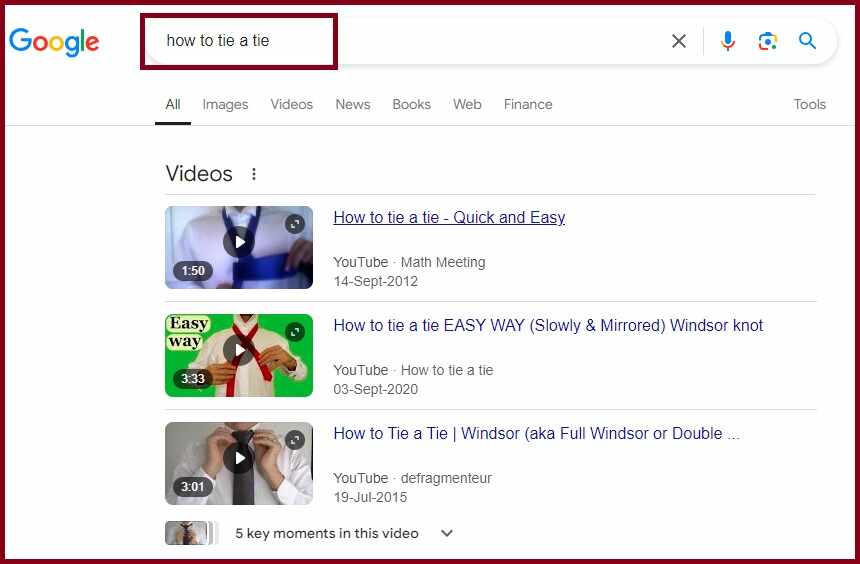
The Role of Paid Results in a SERP
Paid results, often called PPC ads (Pay-Per-Click ads), are an essential part of the SERP. These ads typically appear at the top of the page, marked with a small “Ad” label. They look almost identical to organic results, which can make them tempting for users to click on.
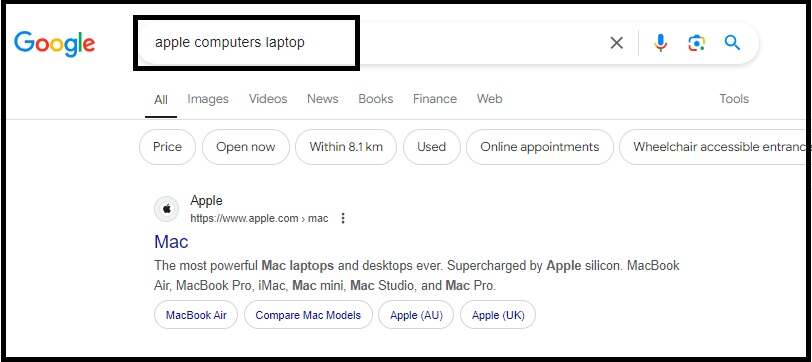
Let’s say you’re searching for a new laptop. You might see both organic results from tech blogs as well as paid results from companies like Dell or Apple. The presence of ads is particularly helpful in transactional searches where users are more likely to make a purchase.
How to Show 100 Results in SERP
If you’re an advanced user or researcher, you might want to see more than the default number of results on a SERP. Google allows you to adjust your settings to display up to 100 results per page. This can be particularly useful for comparative research or niche markets.
What Is the Function of a SERP?
At its core, the function of a SERP is to provide users with the most relevant information in response to their search query. Whether you’re searching for directions, shopping for products, or researching a topic, the SERP delivers the answers you need quickly and efficiently.
Optimizing for SERPs: SEO and PPC
To increase your chances of appearing on the first page of the SERP, you’ll need to employ a combination of SEO and PPC strategies.
1. SEO (Search Engine Optimization)
SEO focuses on optimizing your website for organic search results. This involves creating high-quality content, using relevant keywords, and improving the overall user experience on your site. SEO includes two main strategies:
- On-Page SEO: The On-page SEO refers to practice of optimizing individual pages on your website. It includes things like writing Meta descriptions, adding relevant keywords, and creating engaging content.
- Off-Page SEO: This focuses on building your site’s authority through backlinks from reputable sites and maintaining a strong social media presence.
2. PPC (Pay-Per-Click Advertising)
With PPC, you pay for your site to appear in the paid results section of the SERP. While SEO can take time to yield results, PPC allows you to instantly gain visibility. The trick is to create high-quality ads and bid on keywords relevant to your business.
A Step-by-Step Guide to Improving Your SERP Ranking
1. Identify Your Keywords
Start by researching what keywords your target audience is using. Tools like Google Keyword Planner or SEMrush can help you find the best keywords to optimize for.
2. Optimize Your Content
Once you have your keywords, start creating content around them. Be sure to include them naturally in your headings, body text, and Meta descriptions.
3. Use Rich Media
This Includes images, videos, and infographics to make your content for more engaging. Google loves multimedia-rich content and may reward your site with a higher ranking.
4. Monitor Your Performance
Tools like Google Analytics allow you to track how well your site is performing. Use this data to make adjustments and improve your rankings over time.
Final Thoughts: Why Understanding SERPs Is Important
Whether you’re a business owner, a marketer, or simply a curious individual, understanding What Is a SERP? A Comprehensive Guide to Search Engine Results Pages is essential. It not only helps you navigate the online world more efficiently but also gives you the tools to improve your online presence.
By focusing on both organic and paid search results, you can maximize your visibility and ensure your content reaches the right audience at the right time. So next time you use Google, take a moment to appreciate the complexity of the SERP and how it shapes your digital experience.
I hope this guide has provided you with a solid understanding of What Is a SERP? A Comprehensive Guide to Search Engine Results Pages. Now that you know the basics, you can start implementing these strategies to boost your website’s visibility and drive more traffic to your business.

